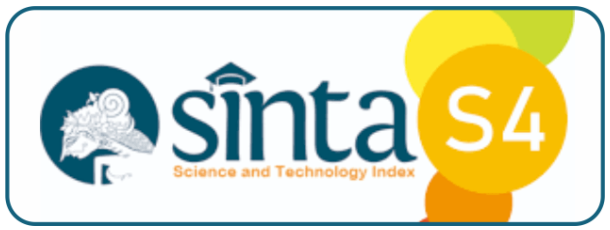Uncovering Legendary Coffee Shops in Pontianak Through Sentiment Analysis
DOI:
https://doi.org/10.32877/bt.v7i3.2240
Keywords:
Aming Coffee Shop, Asiang Coffee Shop, Naive Bayes, N-gram, Sentiment Analysis
Abstract
Nowadays, coffee shops are scattered everywhere offering a variety of unique experiences to attract customers. Despite the rapid emergence of modern coffee shops, certain long-established coffee shops (often referred to as “legendary coffee shops”) continue to thrive and maintain a loyal customer base. The success of legendary coffee shops can be attributed to factors such as signature beverages, distinctive ambiance, and a strong word-of-mouth reputation. Unlike newer establishments that rely heavily on digital marketing, these coffee shops build trust and popularity over time. To further understand their influence, sentiment analysis can be applied to customer reviews of the coffee shops. This study analyzes two legendary coffee shops in Pontianak, namely Aming Coffee Shop and Asiang Coffee Shop to understand the key factors behind their sustainability despite strong competition using Naïve Bayes Method. The best accuracy for testing data at a 50:50 ratio was 76.76%, while training data reached 96.16%. The resulting precision and recall values are 96.16% and 78.81%. This study employs N-gram 3 model to identify the top words of both coffee shops. The findings indicates that both coffee shops are well-known for their signature milk coffee and unique flavor beverages that resonate with the local community. Aming Coffee Shop attracts young customers with affordable prices, while Asiang Coffee Shop maintains its traditional coffee shop ambiance, appealing to customers seeking nostalgia. From these two case studies, it is evident the success of a coffee shop is highly influenced by taste, branding, and customer experience.
Downloads
References
D. P. Indah and Ahmadi, “RECOVERY OR NEW STRUGGLE? COMPETITIVE ADVANTAGE IN ‘THE CITY OF 1000 COFFEE SHOP’ ,” J. Ekon., vol. 12, no. 2, pp. 770–773, Apr. 2023.
M. S. Halim and D. Hermawan*, “The Role of Personal Branding and Customer Experience at Warung Kopi Asiang Pontianak,” IJEBD (International J. Entrep. Bus. Dev., vol. 5, no. 1, pp. 48–55, Feb. 2022, doi: 10.29138/ijebd.v5i1.1579.
P. Widiatmaka, M. F. Y. Gafallo, T. Akbar, and A. Adiansyah, “Warung Kopi sebagai Ruang Publik untuk Membangun Harmoni Masyarakat Multikultural,” J. SMART (Studi Masyarakat, Reli. dan Tradisi), vol. 9, no. 1, pp. 65–76, Jun. 2023, doi: 10.18784/smart.v9i1.1922.
N. Novan, E. Kalsum, and L. Lestari, “PONTIANAK COFFEE SHOP,” JMARS J. Mosaik Arsit., vol. 9, no. 1, p. 243, Feb. 2021, doi: 10.26418/jmars.v9i1.45090.
S. Normagiat and M. S. Syaifudin, “KUNCI SUKSES USAHA KEDAI KOPI (STUDI KASUS - AMING COFFEE),” J. BORNEO AKCAYA, vol. 9, no. 1, pp. 64–70, Aug. 2023, doi: 10.51266/borneoakcaya.v9i1.266.
M. Bordoloi and S. K. Biswas, “Sentiment analysis: A survey on design framework, applications and future scopes,” Artif. Intell. Rev., vol. 56, no. 11, pp. 12505–12560, Nov. 2023, doi: 10.1007/s10462-023-10442-2.
K. P. Gunasekaran, “Exploring Sentiment Analysis Techniques in Natural Language Processing: A Comprehensive Review,” arXiv Prepr. arXiv2305.14842, May 2023, doi: 10.17148/IJARCCE.2019.8126.
O. A. Irmawan, I. Budi, A. B. Santoso, and P. K. Putra, “Improving Sentiment Analysis and Topic Extraction in Indonesian Travel App Reviews Through BERT Fine-Tuning,” J. Nas. Pendidik. Tek. Inform., vol. 13, no. 2, pp. 359–370, Jul. 2024, doi: 10.23887/janapati.v13i2.77028.
H. Taherdoost and M. Madanchian, “Artificial Intelligence and Sentiment Analysis: A Review in Competitive Research,” Computers, vol. 12, no. 2, p. 37, Feb. 2023, doi: 10.3390/computers12020037.
D. Fadly Marlina, T. Basuki Kurniawan, M. Zaki Zakaria, S. Farahnasihah binti Abdullah, J. Farmasi, and P. Kesehatan Kemenkes Palembang, “Sentiment Analysis on Natural Skincare Products,” Aug. 2022.
P. Thwe, C. Cho Lwin, and Y. Y. Aung, “NAÏVE BAYES CLASSIFIER FOR SENTIMENT ANALYSIS,” Int. J. Al Res. Writings, vol. 3, no. 7, p. 32, Dec. 2021.
M. I. Fikri, T. S. Sabrila, and Y. Azhar, “Perbandingan Metode Naïve Bayes dan Support Vector Machine pada Analisis Sentimen Twitter,” SMATIKA J., vol. 10, no. 02, pp. 71–76, Dec. 2020, doi: 10.32664/smatika.v10i02.455.
N. M. Al Ghazali and Y. Sibaroni, “Sentiment classification in e-commerce using naïve bayes and combined lexicon - n-gram features,” J. Ilm. Penelit. dan Pembelajaran Inform., vol. 10, no. 2, pp. 1257–1271, 2025.
W. Purbaratri, H. D. Purnomo, D. Manongga, I. Setyawan, and H. Hendry, “Sentiment Analysis of e-Government Service Using the Naive Bayes Algorithm,” MATRIK J. Manajemen, Tek. Inform. dan Rekayasa Komput., vol. 23, no. 2, pp. 441–452, Mar. 2024, doi: 10.30812/matrik.v23i2.3272.
A. Basir, “Analysis of Electronic Wallet User Sentiment on Twitter (x) Social Media Using the Naïve Bayes Classifier Algorithm,” J. Inform. J. Pengemb. IT, vol. 10, no. 1, pp. 79–85, Jan. 2025, doi: 10.30591/jpit.v10i1.8180.
R. A. Sitorus and I. Zufria, “Application of the Naïve Bayes Algorithm in Sentiment Analysis of Using the Shopee Application on the Play Store,” Digit. Zo. J. Teknol. Inf. dan Komun., vol. 15, no. 1, pp. 53–66, May 2024, doi: 10.31849/digitalzone.v15i1.19828.
K. Khadijah, N. Sabilly, and F. A. Nugroho, “SENTIMENT ANALYSIS OF LEAGUE OF LEGENDS: WILD RIFT REVIEWS ON GOOGLE PLAY USING NAÃVE BAYES CLASSIFIER,” J. Ilm. Kursor, vol. 12, no. 1, pp. 23–30, Jul. 2023, doi: 10.21107/kursor.v12i01.328.
A. Mustolih, P. Arsi, and P. Subarkah, “Sentiment Analysis Motorku X Using Applications Naive Bayes Classifier Method,” Indones. J. Artif. Intell. Data Min., vol. 6, no. 2, p. 231, Aug. 2023, doi: 10.24014/ijaidm.v6i2.24864.
M. ISIK and H. DAG, “The impact of text preprocessing on the prediction of review ratings,” TURKISH J. Electr. Eng. Comput. Sci., vol. 28, no. 3, pp. 1405–1421, May 2020, doi: 10.3906/elk-1907-46.
H. Atsqalani, N. Hayatin, and C. S. K. Aditya, “Sentiment Analysis from Indonesian Twitter Data Using Support Vector Machine And Query Expansion Ranking,” J. Online Inform., vol. 7, no. 1, pp. 116–122, Jun. 2022, doi: 10.15575/join.v7i1.669.
A. Romadhony, S. Al Faraby, R. Rismala, U. N. Wisesty, and A. Arifianto, “Sentiment Analysis on a Large Indonesian Product Review Dataset,” J. Inf. Syst. Eng. Bus. Intell., vol. 10, no. 1, pp. 167–178, Feb. 2024, doi: 10.20473/jisebi.10.1.167-178.
D. I. Af’idah, P. D. Anggraeni, M. Rizki, A. B. Setiawan, and S. F. Handayani, “Aspect-Based Sentiment Analysis for Indonesian Tourist Attraction Reviews Using Bidirectional Long Short-Term Memory,” JUITA J. Inform., vol. 11, no. 1, p. 27, May 2023, doi: 10.30595/juita.v11i1.15341.
O. C. Edo et al., “Fintech adoption dynamics in a pandemic: An experience from some financial institutions in Nigeria during COVID-19 using machine learning approach,” Cogent Bus. Manag., vol. 10, no. 2, Dec. 2023, doi: 10.1080/23311975.2023.2242985.
W. M. Baihaqi and A. Munandar, “Sentiment Analysis of Student Comment on the College Performance Evaluation Questionnaire Using Naïve Bayes and IndoBERT,” JUITA J. Inform., vol. 11, no. 2, p. 213, Nov. 2023, doi: 10.30595/juita.v11i2.17336.
R. M. AlZoman and M. J. F. Alenazi, “A Comparative Study of Traffic Classification Techniques for Smart City Networks,” Sensors, vol. 21, no. 14, p. 4677, Jul. 2021, doi: 10.3390/s21144677.
V. Ganganwar and R. Rajalakshmi, “Employing synthetic data for addressing the class imbalance in aspect-based sentiment classification,” J. Inf. Telecommun., vol. 8, no. 2, pp. 167–188, Apr. 2024, doi: 10.1080/24751839.2023.2270824.
A. R. Kurniawan Maranto, Liliy Damayanti, and Irvan Rahul Ramadika, “Perbandingan Algoritma C4.5 dengan Naïve Bayes untuk Menduga Loyalitas Pelanggan pada Perusahaan Internet Service Provider.,” bit-Tech, vol. 7, no. 2, pp. 396–405, Dec. 2024, doi: 10.32877/bt.v7i2.1825.
I. Salim and J. Tjen, “A Comparison of Online Investment Application Opinion Based on Sentiment Analysis,” 2024.
Downloads
Published
How to Cite
Issue
Section
License
Copyright (c) 2025 bit-Tech

This work is licensed under a Creative Commons Attribution-ShareAlike 4.0 International License.
I hereby assign and transfer to bit-Tech all exclusive copyright ownership rights to the above work. This includes, but is not limited to, the right to publish, republish, downgrade, distribute, transmit, sell, or use the work and other related materials worldwide, in whole, or in part, in all languages, in electronic, printed, or any other form of media, now known or hereafter developed and reserves the right to permit or license a third party to do any of the above. I understand that this exclusive right will belong to bit-Tech from the date the article is accepted for publication. I also understand that bit-Tech, as the copyright owner, has sole authority to license and permit reproduction of the article. I understand that, except for copyright, any other proprietary rights associated with the work (e.g. patents or other rights to any process or procedure) must be retained by the author. In addition, I understand that bit-Tech permits authors to use their papers in any way permitted by the applied Creative Commons license.


 DOI :
DOI :
 Abstract views: 31
/
Abstract views: 31
/  PDF downloads: 19
PDF downloads: 19











